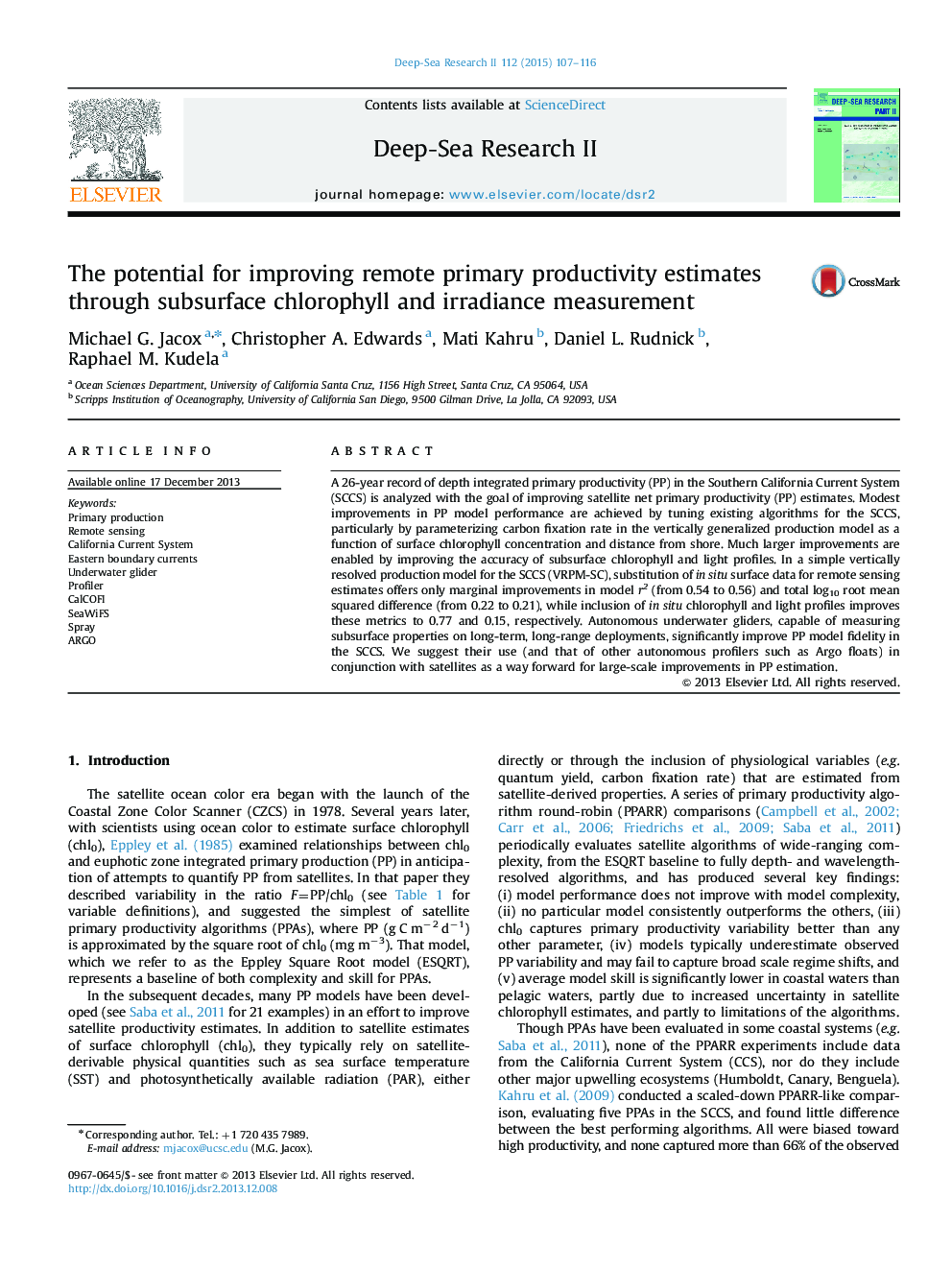| Article ID | Journal | Published Year | Pages | File Type |
|---|---|---|---|---|
| 6384072 | Deep Sea Research Part II: Topical Studies in Oceanography | 2015 | 10 Pages |
A 26-year record of depth integrated primary productivity (PP) in the Southern California Current System (SCCS) is analyzed with the goal of improving satellite net primary productivity (PP) estimates. Modest improvements in PP model performance are achieved by tuning existing algorithms for the SCCS, particularly by parameterizing carbon fixation rate in the vertically generalized production model as a function of surface chlorophyll concentration and distance from shore. Much larger improvements are enabled by improving the accuracy of subsurface chlorophyll and light profiles. In a simple vertically resolved production model for the SCCS (VRPM-SC), substitution of in situ surface data for remote sensing estimates offers only marginal improvements in model r2 (from 0.54 to 0.56) and total log10 root mean squared difference (from 0.22 to 0.21), while inclusion of in situ chlorophyll and light profiles improves these metrics to 0.77 and 0.15, respectively. Autonomous underwater gliders, capable of measuring subsurface properties on long-term, long-range deployments, significantly improve PP model fidelity in the SCCS. We suggest their use (and that of other autonomous profilers such as Argo floats) in conjunction with satellites as a way forward for large-scale improvements in PP estimation.
